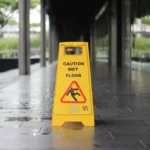
Pedestrian accidents can result in serious injuries and significant financial burdens. If you’ve been injured in a pedestrian accident in California, it’s essential to understand the time limits for filing a legal claim to seek compensation for your damages. Here’s what you need to know about the statute of limitations for pedestrian accident claims in the Golden State.
Importance of Timely Action
- Statute of Limitations: The statute of limitations is a legal deadline for filing a lawsuit. In California, the statute of limitations for most personal injury claims, including pedestrian accidents, is typically two years from the date of the accident.
- Time-Sensitive Evidence: Acting promptly is crucial in preserving evidence and witness testimony, which can be essential for building a strong case. Delaying legal action can make it more challenging to gather evidence and establish liability.
Exceptions to the Rule
- Government Entities: If your pedestrian accident involved a government entity, such as a city or county, there may be shorter deadlines and additional procedural requirements for filing a claim. In such cases, you may need to file a formal claim with the government entity within six months of the date of the accident.
- Minor Victims: If the pedestrian accident involves a minor (someone under the age of 18), the statute of limitations may be extended, allowing the minor to file a claim within two years of their 18th birthday.
Consequences of Missing the Deadline
- Barred from Recovery: Failing to file a pedestrian accident claim within the applicable statute of limitations can result in your claim being barred, meaning you lose the right to seek compensation for your injuries and damages.
- Legal Defense: Defendants in a lawsuit can raise the statute of limitations as a defense, seeking to have the case dismissed if it’s filed after the deadline has passed.
Steps to Take
- Seek Legal Guidance: If you’ve been injured in a pedestrian accident, don’t delay in seeking legal guidance from a qualified personal injury attorney. An attorney can evaluate your case, advise you on the applicable deadlines, and help you navigate the legal process.
- Gather Documentation: Collect and preserve any evidence related to the accident, such as medical records, police reports, witness statements, and photos of the accident scene and your injuries.
- Act Promptly: Don’t wait until the last minute to pursue legal action. Taking prompt action can help protect your rights and increase your chances of securing fair compensation for your injuries and damages.
Conclusion
Understanding the statute of limitations for filing a pedestrian accident claim in California is crucial for protecting your legal rights and seeking compensation for your injuries. By acting promptly, seeking legal guidance, and gathering necessary documentation, you can ensure that you meet the applicable deadlines and pursue your claim effectively. If you’ve been injured in a pedestrian accident, don’t hesitate to reach out to a qualified personal injury attorney for assistance.
- How Settlement Values Are Determined in California Personal Injury Cases - April 9, 2025
- How Can Evidence Be Preserved After a Personal Injury Accident - April 2, 2025
- How Do Emotional Distress Claims Work In Personal Injury Cases? - March 20, 2025